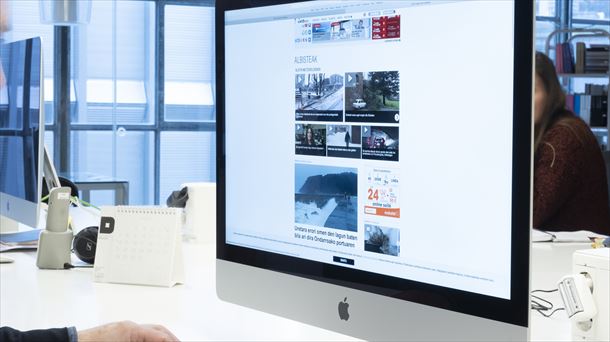More than the postcard of the Levantine coast, one of the recurring images this summer is that of a damaged vehicle on the side of the road, waiting for the tow truck under the bleak summer sun.
According to the DGT, there were 93.4 million long-haul journeys – 45.3 and 48.1 million respectively – in July and August, an increase of 2.4% compared to the same period in 2019, the last year not affected by mobility restrictions . Since in the summer of 2022 the price of fuel had doubled compared to 2021, flying by plane had become almost unaffordable. This, after two years of restrictions, sparked resident tourism and sent the Spaniards to the highways.
Unfortunately, 2022 was also the summer with the highest number of breakdowns, with roadside assistance increasing by 11%, representing a
the highest figure in the past five years according to the insurer
axa. The main cause was tire problems, which increased the number of incidents by 26% compared to 2019. As for blowouts, one of the most dramatic and dangerous situations, especially when the car is loaded, as is usually the case. on vacation — have doubled, 97% more than three years ago.
If you have not had an accident, a blowout in a modern car is a debilitating defect. Ten years ago, if you had a flat tire you could be back on the road in half an hour. Today it is a must-see in the workshop, as spare wheels are no longer included in modern vehicles. This is due to the need for manufacturers to reduce the weight of their vehicles to meet increasingly aggressive emissions regulations.
“And if this happens on a Saturday, it could save four days of vacation,” he says.
Anthony Rubio, manager of Grúas del Sur, which operates in Malaga, one of the provinces with the most traffic this summer. “Workshops have fewer and fewer tires in stock and have to order them from a warehouse. In the meantime, the insurers have to accommodate you, but good luck finding a hotel in Malaga in August…»
This in the event that it is only a breakdown and not a fatal accident. 2022 is also the end of the worst summer of the past three years, with 225 people killed on the road.
According to the company director of Ganvam — the Spanish association that includes distributors and workshops —,
Jaime Barea,,The older the car, the less it comes into the workshop. When the vehicle is 10 years old, the visits are halved and when it is more than 15 years it happens once every two years. This year, 1.2 million used vehicles have been sold so far.
Of these, 459,589 were older than 15 years, and 277,954, between 10 and 15. For the oldest, it’s a 9.4% increase, accentuated by two factors: the lack of inventory at dealers, caused by the shortage of semiconductors; and the loss of purchasing power of the Spanish population, which leads the buyer to the cheapest models, even if they have hidden costs.
According to the European Association of Manufacturers (ACEA), the Spanish mobile fleet was 13.1 years old in 2020, 2.3 more than the continental average. Anfac, the Spanish association, provides more current data, with an average of 13.8 years.
This puts our country in twelfth placealthough if the size of the park is taken into account, it is in the ‘top 5’, having more years than Germany, Italy, the UK or France.
The age of a fleet is inversely proportional to
the per capita income of your country. In Luxembourg, where cars are on average 6.7 years old, GDP per capita is $115,873 per year. In Lithuania, where the park is 17 years old, the annual rent is $19,997.
When rents are low, car maintenance is no longer a priority. The General Directorate of Traffic, Common Sense and all garage, roadside assistance and insurance associations insist on checking the vehicle before going on holiday, but not everyone can afford a cost of 500 euros, often unforeseen, when the summer kicks off. In the best case scenario, check tire pressure and oil level before going to the beach…
Attendance at the ITV has also suffered. According to AECA data, absenteeism in exam centers is around 40%, 13 points higher than the number registered in 2019.
To the lack of mechanical habits comes another of the biggest risk factors for rubber and rubber parts of vehicles: heat.
Heat is dangerous to vehicles because it increases rubber wear – wheels deteriorate 25% faster in the summer – and attacks the O-rings, which keep fluids in their channels. According to
Tony Milla, manager of Asistencia Torrejón Milla 365, “of the 1,412 operations performed between July and August, the vast majority were overheating caused by low refrigerant.” The directive confirms that the workshops were full this summer, with capacity problems.
“These are glitches that are bullshit,” he says.
Pepe Robaynanchairman of the
Canary Workshops Association. “A rubber grommet costs nothing, but it can prevent a much more complicated problem.” The experienced mechanic also points out the influence of temperature on the filters, another element of frequent failure: warm air contains less oxygen, causing a dirtier combustion than usual. This fills the EGR valves with soot and can eventually clog the injectors, leading to loss of power and increased fuel economy.
“A big part of the fault is that the cars have been standing still for two years,” says Robayna. “The tires are deformed and the fluid level has dropped. The ideal is to complete it all every two years, but few people know when they last did it,” he says.
“Of all the vehicles present in an incident on the road,
cranes are the only ones that always act“, explains Antonio Rubio. However, it is a sector that seems doomed to concentrate in large groups and which can cover its two main costs: that of qualified personnel available 24 hours a day —»they have to be well paid or they go to competitors«— and the of diesel, doubled compared to last year.
Insurers are pushing to digitize their services to be able to offer their customers more and more directly, with services such as geolocation or mobile applications that speed up processing. However, this translates into additional pressure for rescue companies: if they take more than 30 minutes to provide service in the event of a breakdown, their billing will be penalized. In addition, depending on the distance, your kilometer allowance will be progressively reduced. “It’s as if they thought the cranes would use less diesel after 100 kilometers,” they lament.
Source: La Verdad
I am Ida Scott, a journalist and content author with a passion for uncovering the truth. I have been writing professionally for Today Times Live since 2020 and specialize in political news. My career began when I was just 17; I had already developed a knack for research and an eye for detail which made me stand out from my peers.



